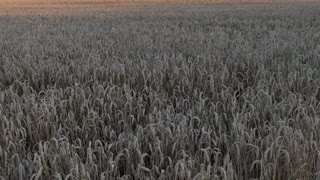New Holland Honey eater Fauna Bird
Honeyeaters are a diverse group of Australian birds belonging to the family Meliphagidae. One of their special characteristics is a 'brush-tipped' tongue, with which they take up nectar from flowers. However, nectar is only one of their foods. Most honeyeaters also eat insects, and some eat more insects than nectar. Many honeyeaters also feed on pollen, berries and sugary exudates (e.g. sap) of plants as well as the sugary secretions of plant bugs
Many honeyeaters are highly mobile, searching out seasonal nectar sources. Mass-flowering eucalypts are particularly popular with these nomadic honeyeaters (e.g. Yellow-faced Honeyeater, Yellow-tufted Honeyeater, White-naped Honeyeater). Other species are sedentary (e.g. Little Wattlebird, Eastern Spinebill) and some species are strongly territorial
Several different species of honeyeater often compete for plant resources in the same area, but the larger species tend to win the battles for access to flowers (e.g. Red Wattlebirds and Noisy Miners). However, some smaller species (e.g. Eastern Spinebills) can coexist with the large species because they don't need as much food and can 'sneak' into flowering plants if there is enough foliage cover for them to hide in.
Because gardeners tend to grow plants with large and long-lasting floral displays, urban areas can provide plenty of food for honeyeaters. However, it is often the large honeyeaters that dominate gardens. This is probably because there is often not enough dense shrubbery in gardens to provide cover for small species
-
 4:42
4:42
cnmascj
1 year agoOur New Holland Lop Bunnies!
5 -
 3:32
3:32
Out West Farming Ranching
1 year agoNew Holland Bale Wagon Loading Small Bales
3 -
 0:22
0:22
Everything its here
1 year ago $0.01 earnedHarvesting wheat with New Holland
10 -
 0:17
0:17
HJChannel
1 year agoHarvesting wheat with New Holland Part 2
9 -
 16:13
16:13
Scammer Payback
6 days agoLet's Show a 𝗦𝗖𝗔𝗠𝗠𝗘𝗥 His Pictures
25.3K19 -
 56:44
56:44
Ben Shapiro
5 hours agoEp. 1996 - Wait, Can Donald Trump DRONE His Political Enemies Now?!
70K87 -
 1:09:31
1:09:31
Russell Brand
7 hours agoTHEY’RE POISONING US | Big Pharma’s Shocking TRUTH - Stay Free 398
145K304 -
 1:34:23
1:34:23
TheAlecLaceShow
5 hours agoOrange Biden Slams SCOTUS Ruling | Debate Night Fallout | Who Replaces Biden? | The Alec Lace Show
36.5K20 -
 2:59:14
2:59:14
The Charlie Kirk Show
5 hours agoDems in Disarray + The Immunity Question + Why Biden Can't Leave | Paoletta, Starbuck, Bedford, Webb
110K51 -
 1:58:11
1:58:11
Omar Elattar
1 day agoANDREW TATE: $100 Million Confessions, Trump Vs. Biden, Elon Musk & Palestine-Israel
24.2K6